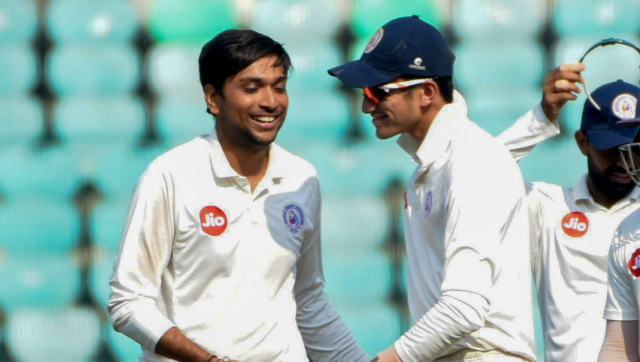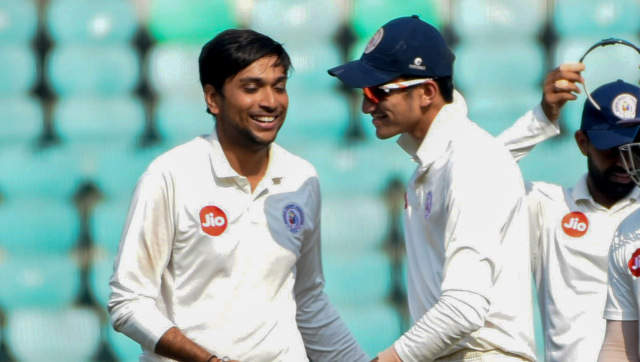Ahmedabad: On Saturday evening, a 22-year-old man walked out of the Delhi airport with dreams of starting a new revolution in India, and a new headache for the Narendra Modi government.
The architect of the latest Patidar reservation — or is it anti-reservation? — movement, Hardik Patel landed in Delhi to meet representatives of the Jat and Gujjar communities, along with members of his own community, in Delhi to turn his agitation into a nationwide stir. Also on Hardik’s agenda is a mammoth rally in the heart of Delhi next month.
Among Hardik’ interlocutors in the national capital are members of the Patidar community from 10 Indian states. Hardik Patel claims the Patidars are spread in several corners of India — from Rajasthan in the north to Andhra Pradesh in south — they number nearly 27 crore. “The Kurmis of Bihar and their leader Nitish Kumar is ours; the Andhra Pradesh Chief Minister Chandrababu Naidu is also part of the Patidar family,” he says.
The Bihar CM has already supported the Patidar movement, though his stand has led to friction within the JD (U), with senior leader Sharad Yadav refusing to back the movement.
Hardik has also sent feelers to Gujjars of Rajasthan and Uttar Pradesh, and leaders of Jats from Haryana, Delhi and western UP.
The Gujjars of Rajasthan, part of the OBC list, have been demanding quota benefits under a separate category of special backward classes for almost a decade. Their leader Kirori Singh Bainsla was scheduled to share the stage with Hardik in Ahmedabad, where thousands of Patidars gathered in support of their demand for OBC status, on Tuesday. Bainsla later backed out citing ill-health.
The Jats of north India have been simmering since their inclusion among OBCs — by the UPA government just before the 2013 Assembly elections — was struck down by the Supreme Court, citing their ineligibility for reservation.
Hardik’s ambition is clear: He wants to bring all communities fighting for reservation benefits under one umbrella and showcase their combined might in Delhi. His plans are not limited to Gujarat and the state’s Patel community, which is fighting under his leadership for either a share of the 27 percent quota set aside for OBCs or replacement of caste with socio-economic criteria, as the basis for reservation.
Hardik has given enough indications that his fight is not limited to Gujarat. At the rally in Ahmedabad on Tuesday (25 August), he spoke in Hindi, even when, as editor of the Ahmedabad edition of DNA, Shyam Parekh, points out, several members of the community don’t understand the language.
The success of the Ahmedabad rally — he claims there were 18 lakh Patels in the Gujarat capital for the event — has further emboldened Hardik. He feels the Gujarat model of the movement can be replicated in other states too with help from other communities fighting reservation battles in their own regions.
As recently as a few days ago, sceptics would have smirked at Hardik’s plans to launch a nationwide stir for change in the existing reservation system. Ahmedabad-based journalists say that until a few days ago, nobody had even heard of Hardik or his movement. But the young leader from a modest family of Viramgam suddenly appeared on the horizon with the support of thousands of supporters, whose numbers later swelled to nearly a million.
The Patels are known to be a clannish, closely-knit community in Gujarat. But ideological and political differences between its two major segments — Karwa and Leuva Patels — have traditionally led to some amount of intra-community friction. Hardik, however, managed to unite the Patels for his cause and iron out their differences.
Hardik claims he built the movement from the ground up by addressing dozens of rallies in Gujarat’s villages and towns, before converging in Ahmedabad. The first rally, he says, was organised on 6 July with the support of 25,000 people; after that, the numbers kept growing exponentially.
But, several hidden forces may have contributed to Hardik’s success. The young leader makes no efforts to hide his ideological leanings. He claims Bal Thackarey and Bhagat Singh are his heroes, and VHP leader Pravin Togadia an inspiration. Hardik’s father, a Viramgam-based trader, is an ordinary member of the BJP.
Analysts, however, argue that the real force behind the movement is the RSS. A report in Gujarati daily Divya Bhaskar claims the Sangh has propped up Hardik to turn reservation into an pan-India issue. “The Sangh’s objective is to initiate a debate on the caste-based reservation policy and then prepare grounds for its replacement with socio-economic criteria,” the report argues.
The Shiv Sena has hailed him as Gujarat’s hero. In an editorial on Friday, the party mouthpiece Saamana called him the new “king of crowds”. It said that his rise has punctured claims that Gujarat was a peaceful state and the development does not augur well for the BJP. But the party has refused to back his demand for OBC status for Patidars, calling them as affluent as the Marathas of Maharashtra.
Now that Hardik has decided to step out of Gujarat, we will soon know whose his real friends and foes are.


)




)
)
)
)
)
)
)
)